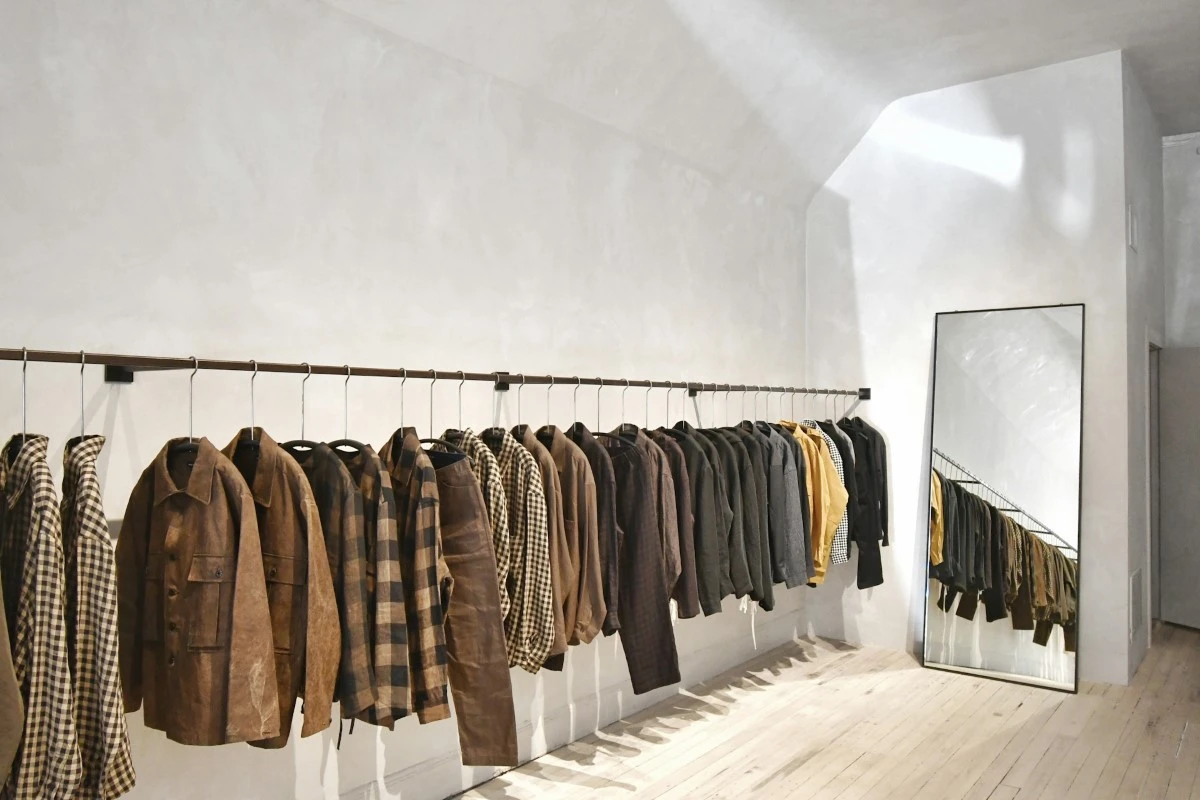
Organizing a clothing store is crucial for enhancing customer experience and boosting sales. Whether you’re optimizing floor space, leveraging vertical storage, or implementing inventory systems, this guide on how to organize a clothing store provides actionable strategies to help you create an efficient and inviting retail environment. Let’s dive in.
Key Takeaways
- Optimize your floor space by strategically placing products, using vertical storage, and enhancing customer navigation for increased sales.
- Implement an effective inventory management system to track stock levels, streamline operations, and ensure product availability.
- Create attractive displays and maintain clean aisles to enhance the shopping experience, encouraging customers to spend more time and make purchases.
Optimize Your Floor Space
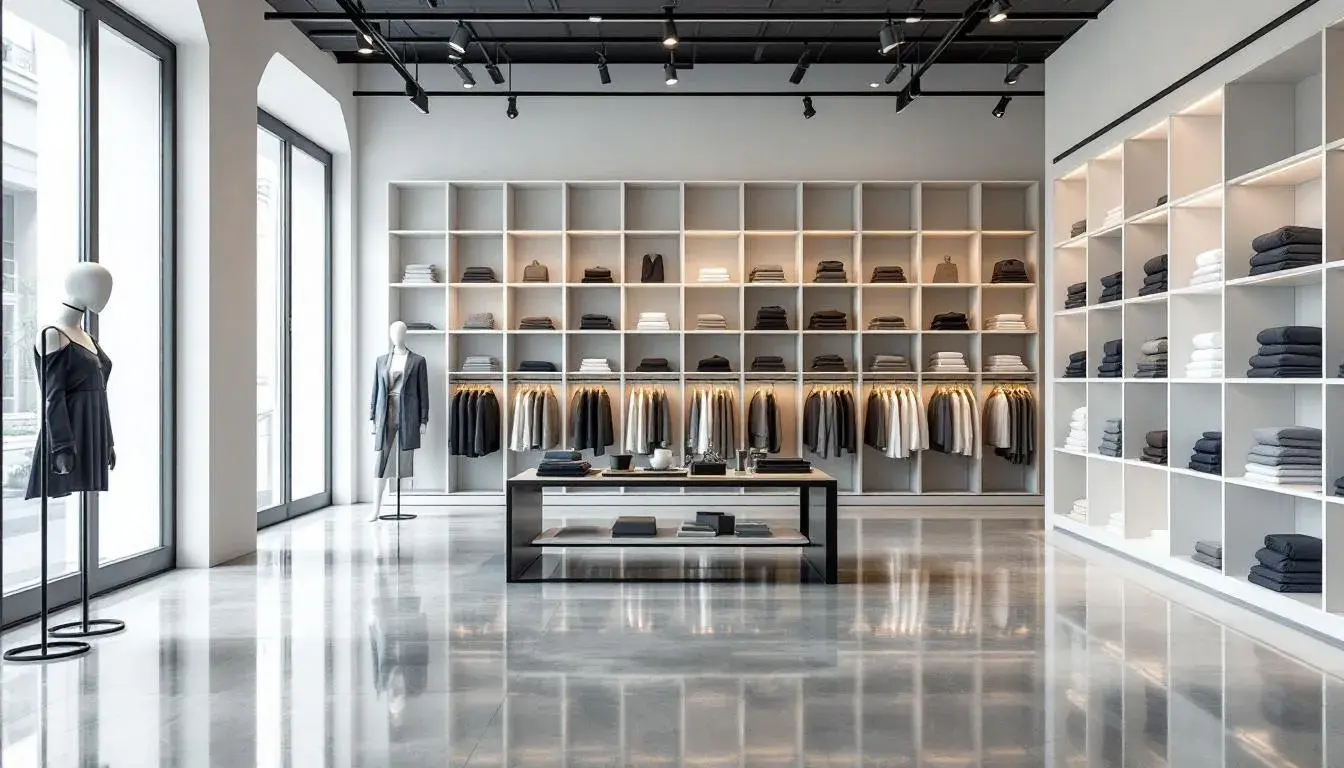
Maximizing floor space creates a shopping environment that feels spacious and inviting. Placing popular items at the back of the store encourages customers to walk past other products, increasing the chance of impulse buys. Creating a natural flow in your retail layout enhances customer movement and prevents congestion, making navigation easier.
Maximizing underused areas like corners and spaces beneath shelves can be a crucial aspect of additional storage and display options. For example, these areas can display accessories or smaller items that complement your main products, adding to the visual appeal and making better use of every available inch.
Organizing items based on size and type can significantly enhance customer navigation and satisfaction. When customers can easily find what they are looking for, they are more likely to make a purchase. Grouping similar items together and clearly labeling each section will make it easier for customers to locate specific products of different sizes and create a more enjoyable shopping experience.
Leverage Vertical Space for Storage

Utilizing vertical space is a game-changer for both the sales floor and the stockroom. Benefits include:
- Tall shelving units and racks draw the eye upward and increase display capacity, making your store feel more spacious at eye level.
- High shelving is particularly effective for showcasing clothing inventory.
- It allows you to display more items without taking up additional floor space.
In the stockroom, vertical space frees up floor space, enhancing movement for staff and making inventory access easier. To maximize inventory space:
- Use shelving units that reach the ceiling.
- Invest in stackable containers.
- Place less-frequently accessed inventory on higher shelves to ensure the most important items remain easily accessible.
Safe stools and ladders facilitate access to higher shelving. Regularly reviewing your organization and storage methods helps optimize vertical space effectively. Making the most of vertical space allows you to store more inventory and create a well-organized, efficient warehouse.
Implement Inventory Management Systems
Inventory management systems are crucial for tracking stock levels and preventing stockouts. Automated inventory management helps maintain optimal stock levels based on demand, ensuring that you always have the right products available. Inventory management software simplifies the process of tracking inventory and forecasting supply depletion, making inventory management easier.
Advanced inventory systems enhance supply chain accuracy by providing detailed inventory tracking of stock flow. This keeps your stockroom efficient by accurately tracking stock levels and ensuring that items are always in the right place. Real-time access to new inventory data allows you to track stock levels and make informed decisions about reordering products and managing stock more effectively.
Investing in inventory management software becomes necessary when the existing system is no longer sufficient. These systems can provide alerts for low stock, improving procurement efficiency. An effective inventory management system lowers carrying costs, improves accuracy, and maintains a well-organized warehouse that supports your retail operations.
Create Attractive Displays
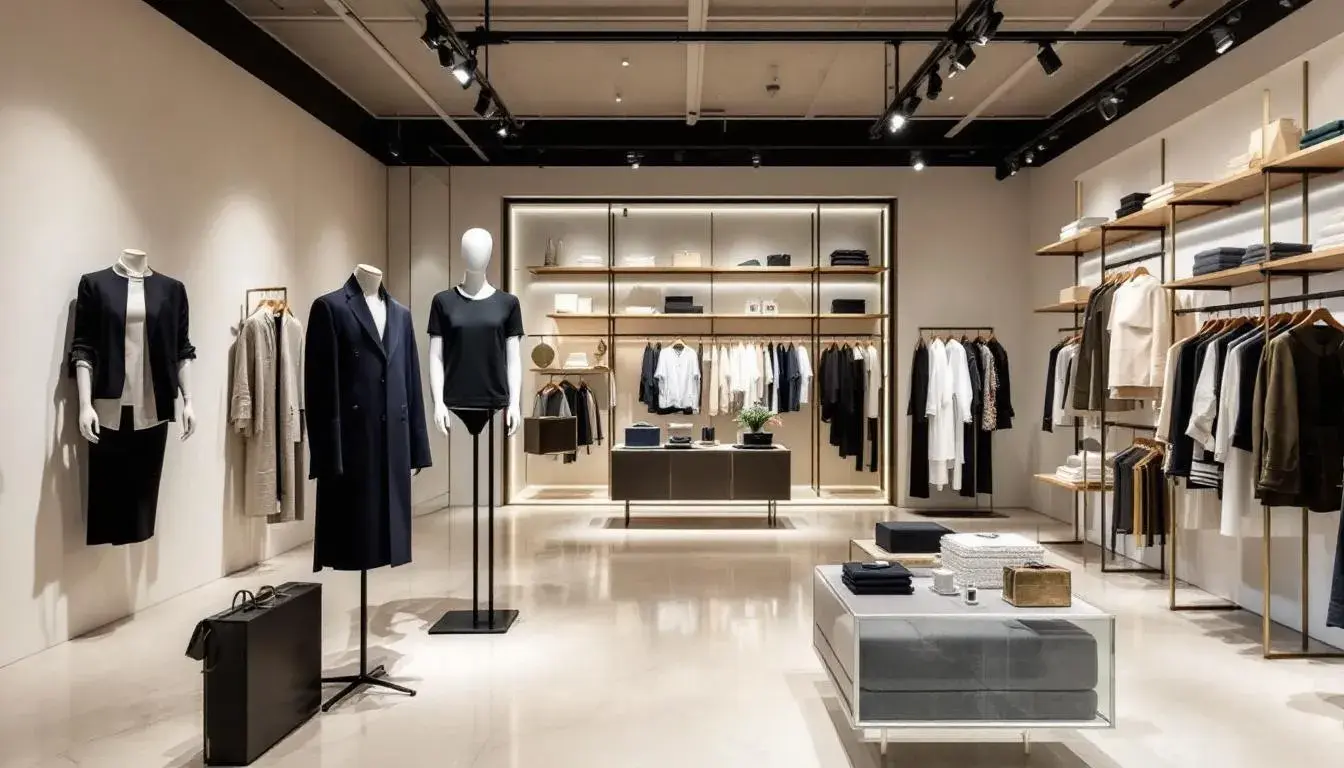
Visually appealing displays attract customers and enhance their overall shopping experience. Using color psychology in your displays creates emotional connections and influences purchasing behavior. For example, warm colors can create a sense of urgency, while cool colors evoke calmness and trust.
Seasonal and holiday displays keep your retail store feeling fresh and relevant throughout the year. These displays attract attention and encourage customers to explore new items and make purchases, as the store sells a variety of options.
Interactive displays engage customers more effectively by allowing them to experience products first-hand, displaying their connection to the brand. Attractive displays encourage customers to spend more time in your store and increase sales.
Efficiently Categorize Merchandise
Efficiently categorizing merchandise simplifies management and improves the shopping experience. Categories of items can be organized by criteria such as:
- Specific type
- Size
- Demand Grouping similar items together makes it easier for customers to find what they are looking for and encourages them to explore the most popular items and related products.
Clear labeling makes sense, simplifying product locations for both staff and customers. This enhances the shopping experience and improves efficiency in restocking and inventory management.
Use zoning by dividing the clothing store into designated areas for different types of clothes to streamline the shopping experience. Efficiently categorizing merchandise creates a well-organized warehouse that supports both staff and customers.
Utilize Mobile Storage Units
Mobile storage units:
- Adapt to changing inventory needs and optimize floor layouts.
- Are easily rearranged, making them ideal for small retail environments with limited space.
- Are particularly beneficial for storing seasonal items or frequently moved products.
- Help maintain an organized sales floor to sell effectively.
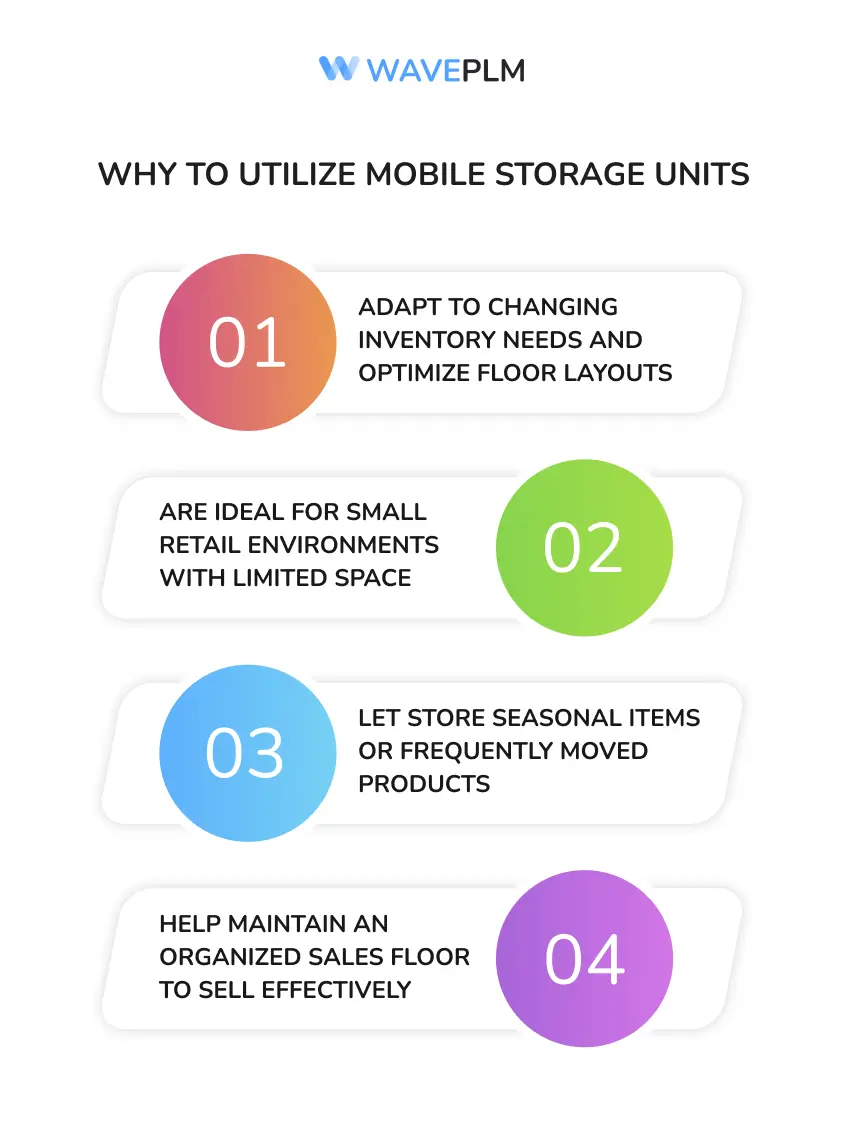
Mobile storage units allow for flexible floor layouts and ensure easy access to inventory, optimizing storage areas. They support dynamic stockrooms by requiring flexible layouts to accommodate various inventory needs.
Investing in mobile storage units enhances both flexibility and organization in your retail stores space where items can be selling stored efficiently.
Set Up a Well-Organized Stockroom
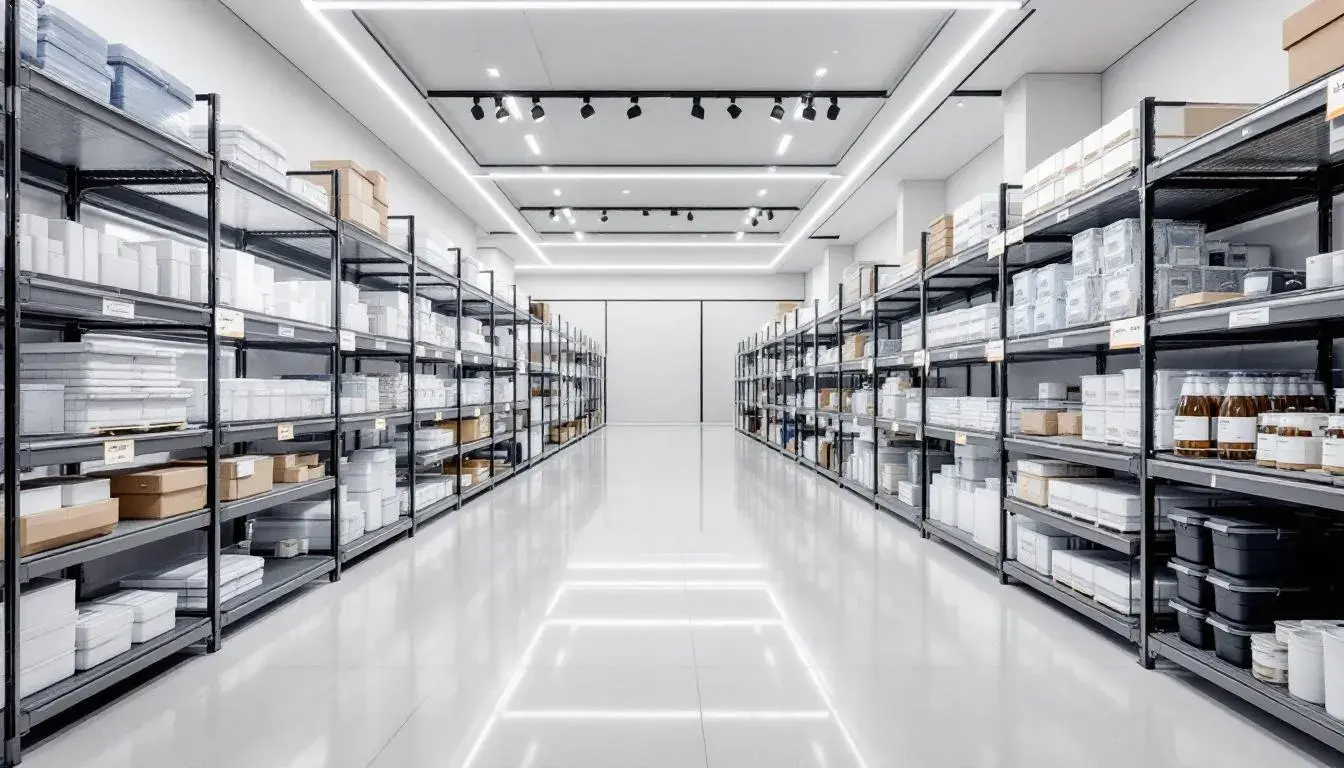
A well-organized stockroom is crucial for overall efficiency and productivity. Key elements include:
- Effective labeling to help quickly locate items.
- Creating an organized system for item placement to enhance overall efficiency.
- Adequate lighting to safely navigate higher shelves and locate items.
Recommendations for stockroom operations include:
- Keeping heavy items close to the floor to reduce the risk of injuries during handling.
- Using mobile storage units to temporarily store excess inventory, allowing for quick reorganization as needed.
- Conducting regular audits and team training to help identify areas for improvement in stockroom operations.
Decluttering and proper organization are essential for maintaining a clean stockroom. A well-organized stockroom improves overall productivity and helps to organize items so they are always in their proper place. These essentials contribute significantly to an efficient workspace.
Train Your Employees
Training your employees is essential for maintaining organization and efficiency in your store. Training should cover best practices and the effective use of tools and equipment in the warehouse. Training staff on organization practices significantly enhances overall efficiency and safety in the warehouse.
Regular training sessions help maintain organization and a high level of employee familiarity with organizational techniques and procedures. Regular stock audits build employee accountability regarding inventory management.
Investing in employee training creates a well-organized warehouse that operates smoothly and efficiently.
Maintain Clean and Clear Aisles
Clean and clear aisles are essential for safety, speed, and efficiency in the workplace. Clear aisles ensure safety in warehouse organization. Narrow aisles can lead to longer movement times for merchandise, increasing the risk of damaging inventory.
Clutter can lead to chaos and demoralization of staff, negatively impacting overall store operations. Regular cleaning and organizing of aisles prevents clutter and eliminates unnecessary steps, ensuring a positive shopping experience.
Maintaining clean and clear aisles creates a well-organized warehouse that supports both warehouse staff and customers.
Conduct Regular Audits
Regular audits are essential for maintaining accuracy and efficiency in inventory management. Audits help identify discrepancies or misplaced items. They enhance overall productivity and customer satisfaction by ensuring that inventory records are accurate.
Regular inventory audits ensure accuracy and efficiency in inventory management. They significantly contribute to maintaining the overall efficiency of the store. Conducting regular audits maintains a well-organized warehouse and improves overall store operations.
Enhance Customer Experience

Enhancing the customer experience is crucial for the success of any retail business. Proper lighting:
- Reduces shadows
- Makes retail spaces feel larger and more inviting
- Enhances product perception
- Creates an inviting retail atmosphere
Strategies to make a retail space appear larger include:
- Strategically placed mirrors to visually expand the space and enhance lighting.
- Using light colors to create an airy and spacious perception.
- Employing minimalism in product displays to prevent overcrowding and foster a more spacious feel.
Effective signage guides customers, highlights products, and shares promotional information. Enhancing the customer experience encourages customers to spend more time in your store and increase sales.
Summary
In summary, organizing a clothing store involves several key strategies, including optimizing floor space, leveraging vertical storage, implementing inventory management systems, and creating attractive displays. By categorizing merchandise efficiently, utilizing mobile storage units, and setting up a well-organized stockroom, you can enhance the overall efficiency and customer experience in your store. Regular training for employees, maintaining clean and clear aisles, and conducting regular audits are also essential for maintaining a well-organized warehouse. By implementing these strategies, you can create a store environment that is both efficient and inviting, ultimately leading to increased sales and customer satisfaction.
Frequently Asked Questions
Why is optimizing floor space important for a clothing store?
Optimizing floor space is crucial because it fosters a welcoming atmosphere that encourages customer exploration and boosts impulse purchases. When your store feels open and inviting, shoppers are more likely to engage and buy!
How can vertical space be utilized effectively in a clothing store?
Utilizing tall shelving units, high racks, and stackable containers can dramatically increase your display capacity and improve customer movement in your clothing store. Embrace vertical space to create an inviting shopping experience and maximize your sales potential!
What benefits do inventory management systems offer?
Inventory management systems greatly enhance your business by tracking stock levels, preventing stockouts, and offering real-time inventory data, ensuring you stay ahead in supply chain accuracy. Embrace these tools for a more efficient operation!
How can attractive displays enhance the shopping experience?
Attractive displays significantly enhance the shopping experience by engaging customers through color, theme, and interactivity, making shopping not just a task but an enjoyable adventure. Embrace the vibrant atmosphere and watch as it transforms your shopping journey!
Why are regular audits important for a clothing store?
Regular audits are crucial for a clothing store as they pinpoint discrepancies, maintain accurate inventory, and boost productivity, leading to smoother operations. Embrace the power of regular audits to elevate your store’s success!




